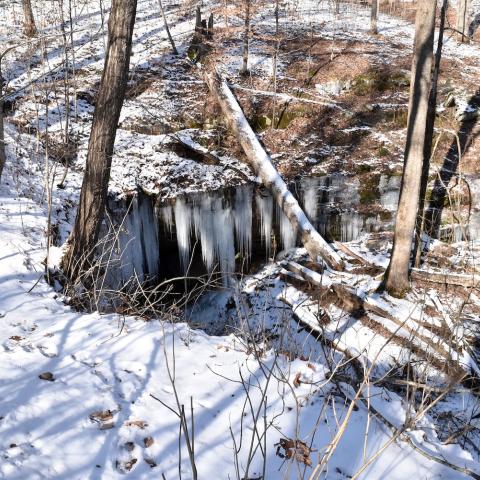
Stephen Bishop was a slave brought to guide tours of Mammoth Cave.He went on to become famous for the discoveries he made in the cave/NPS
One of the first guides for visitors to Mammoth Cave, long before it was a national park, was Stephen Bishop. At the time he was introduced to guiding tours, he was just a teen-ager. He also was a slave.
During the 1800s, enslaved African Americans guided tourist excursions through the dark, silent passages of Mammoth Cave. Their role in society was that of slaves, but in their daily lives they were leaders. Bishop, for instance, was credited with discovering many miles of passageway in the serpentine cave.
In recognition of Black History Month, on each Saturday in February park staff will convey the legacy of enslaved guides at Mammoth Cave through walks, talks, video clips, and student art exhibited in the visitor center. The Black History Month activities are free and open to the public; reservations are not needed.
Saturday ranger walks will depart from the visitor center at 10:30 a.m. and 1:30 p.m.. The 1¼-hour accessible walks will follow the Heritage Trail, overlooking Mammoth Cave’s Historic Entrance, and will terminate at the Old Guide’s Cemetery, the final resting place of famed Stephen Bishop.
* February 6. Park guide Cory Fish will present In the Footsteps of Slavery. The scar of slavery can still be felt along the ridgelines overlooking Mammoth Cave. Ranger-led walk along our ¾-mile Heritage Trail, exploring the large role enslaved African Americans played in Mammoth Cave’s rich history.
* February 13, 20 & 27. Join park guide Jerry Bransford for The Enslaved Leaders of Mammoth Cave, as he dons period costume to lead a walk along the Heritage Trail. Bransford will explain the rich heritage, contributions and legacy of these guides at Mammoth Cave during the 1800s.
Two video clips that feature stories of the enslaved Mammoth Cave guides will play in the visitor center exhibit area the entire month of February, courtesy of WKU-PBS and KET.


 Support Essential Coverage of Essential Places
Support Essential Coverage of Essential Places







Add comment